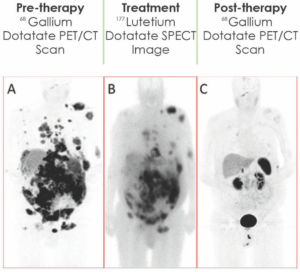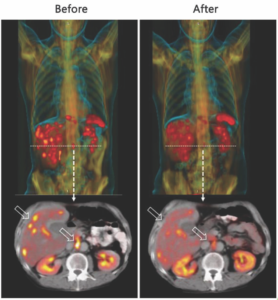177Lutetium-DOTATATE
Therapeutic radioactive doses for Neuroendocrine Tumors
Peptide-Receptor Radionuclide therapy (PRRT)
General Concept
- Neuro-endocrine tumors have somatostatin receptors on their surface.
- We perform diagnostic PET/CT study using 68Gallium-DOTATATE to detect tumors in the body and confirm presence of receptors on tumor cells.
- We then inject the therapeutic dose (177Lutetium-DOTATATE). 177Lutetium emits short ranged Beta rays of average length of 0.23mm leading to tumor cell damage and at the same time low risk to surrounding healthy cells.



